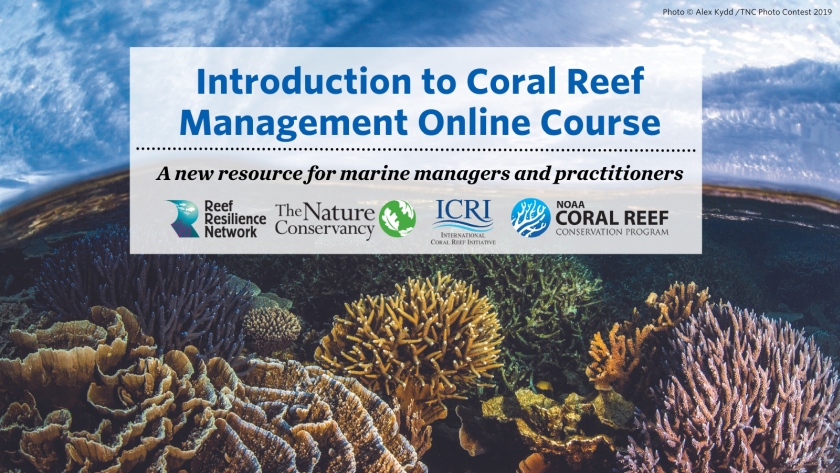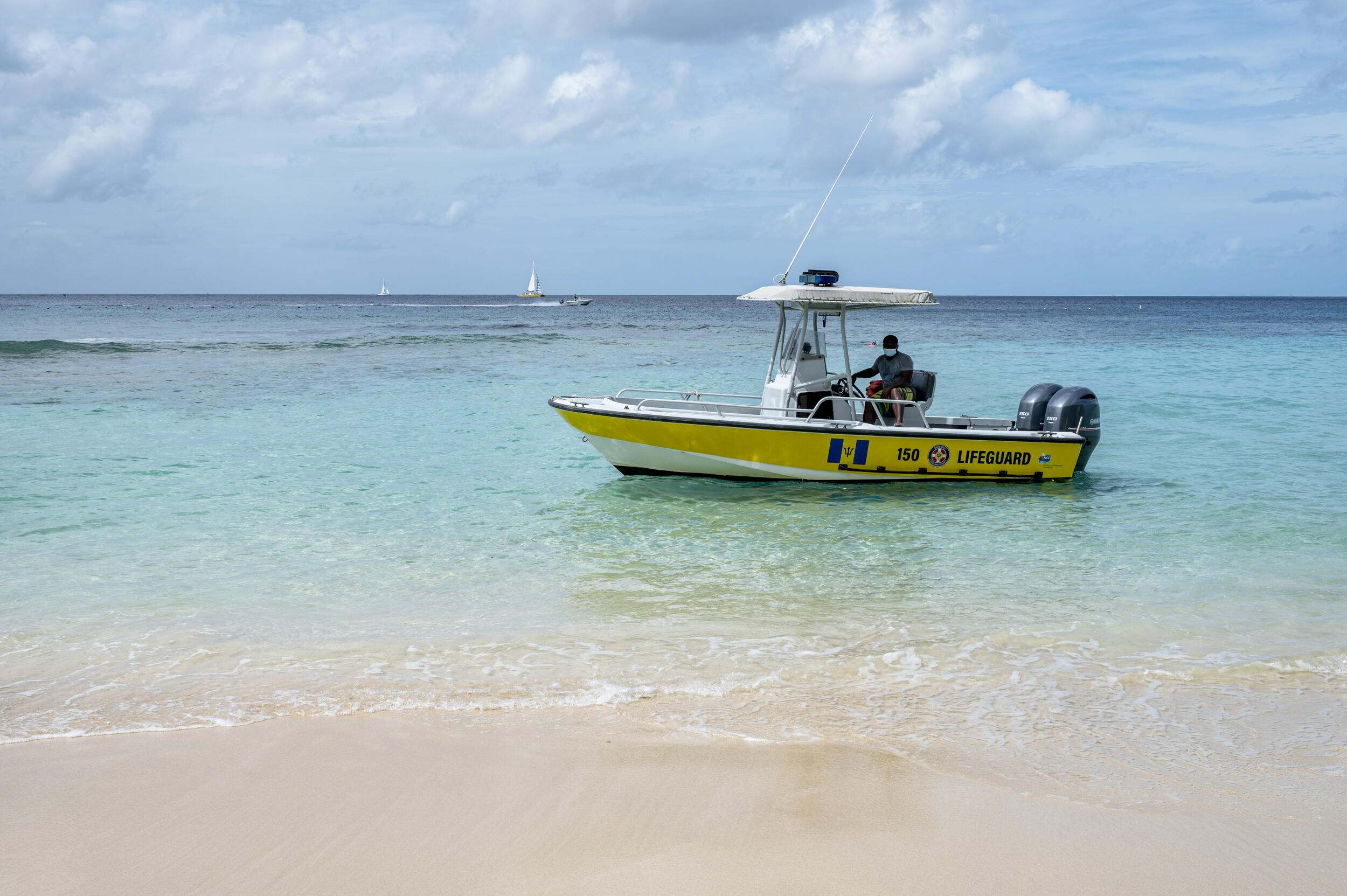The Establishment of Man of Shoals Marine Park in Sint Maarten, Caribbean
Location
Sint Maarten/Saint Martin, West Indies
The challenge
The island of Sint Maarten/Saint Martin, in the West Indies, is divided between the French Saint Martin in the North (53 square km) and the Dutch Sint Maarten in the South (34 square km). St. Maarten is part of the Kingdom of the Netherlands. The island is surrounded by about 20 square km of coral reefs.
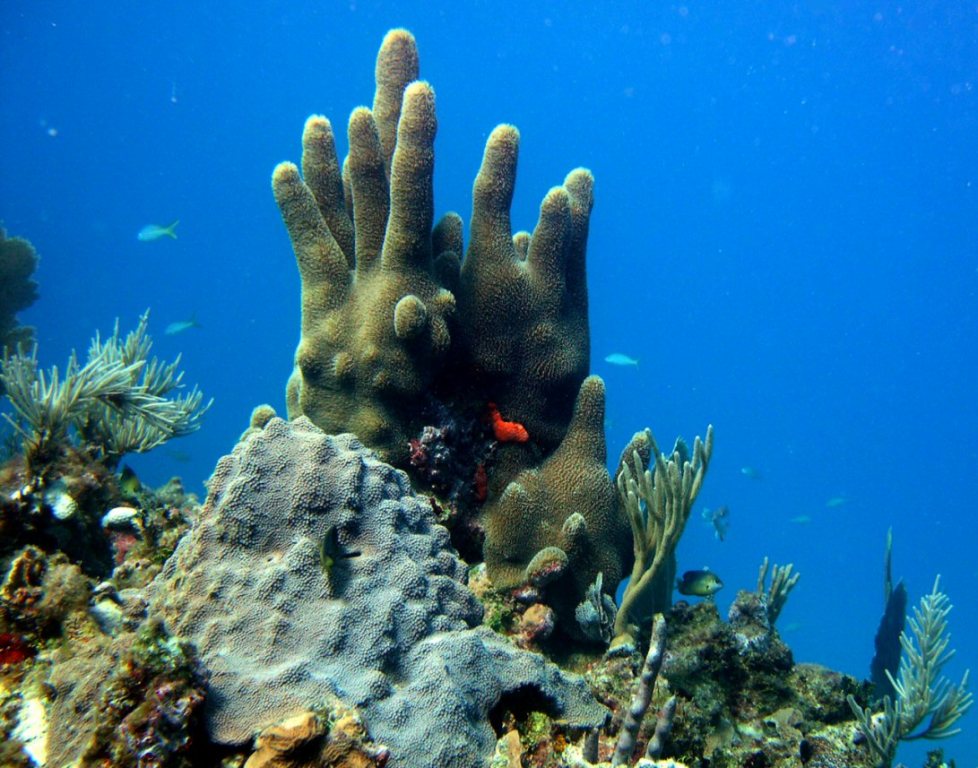
Coral reef in St. Maarten. Photo © Nature Foundation St. Maarten
St. Maarten experienced its first tourism boom starting in the 1960s, when Cuba was first closed to tourism. St. Maarten is now one of the largest tourism hubs in the West Indies with about 85% of its workforce employed in tourism or tourism-related industries. There is no large-scale commercial fishery, only 10-15 artisanal fishers and recreational fishing for marlin (Makaira spp.) and mahi-mahi (Coryphaena spp.).
Until recently, there was little government management of the marine environment in St. Maarten. In 1997, the Nature Foundation St. Maarten was established in order to set up and manage a marine park in St. Maarten, under contract from the St. Maarten government. St. Maarten was the only country in the Dutch Caribbean that did not have a marine park, therefore the proposal aimed to achieve parity between St. Maarten and the other states of the Dutch Caribbean. The proposed park’s design was based on the design of a marine protected area in Bonaire. However, this design was too extensive (it would have included all of St. Maarten’s territorial waters) and too complicated to gain political support. The interests of the cruise ship industry, fishers, and dive shop operators made this challenging for politicians in St. Maarten. Furthermore, while Bonaire’s protected area had a staff of 54, the Nature Foundation St. Maarten had only three people on staff. The park remained an entity only on paper until 2010.
St. Maarten’s reefs have incurred long-term degradation due to the rapid growth of tourism and poor urban planning and infrastructure and lack of watershed management. Hurricanes and mass coral bleaching events have led to an 80% reduction in coral cover in the near-shore environment.
Actions taken
In 2010, the Nature Foundation St. Maarten was officially reactivated to create a well-managed marine park, with a strict no-take area to address increasing threats. The Foundation took a three-pronged approach to get support from decision makers on marine park establishment. First, the Foundation did an ecological assessment of St. Maarten’s reefs. This baseline study pinpointed specific areas – the country’s remaining healthy reefs – as a high priority for conservation. They redesigned the proposed park so that it would protect just those areas – representing 25% of the country’s territorial waters, and covering 10,000 hectares.
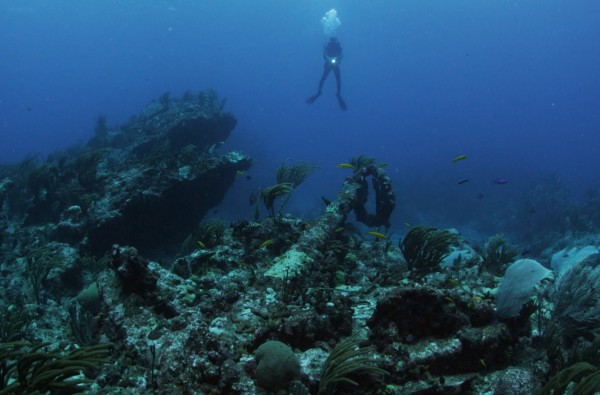
Staff monitoring in Man of Shoals Marine Park. Photo © Mauricio Handler/ DCNA/ NPL
Next, an economic valuation study of the marine ecosystem was completed using a method from the World Resources Institute. This quick-and-dirty method was designed to be easy-to-use by managers. By interviewing dive shop owners, fishers, tourists and other tourism industry stakeholders, the study was able to paint a compelling picture of the importance of a healthy marine ecosystem to St. Maarten’s economy.
Finally, the Nature Foundation St. Maarten took the results from both the ecological assessment and economic valuation study to the community to make their case for the marine park. The Foundation made presentations at community meetings, talked with fishermen and dive operators, and presented to Parliament. On December 30, 2010, the Man of Shoals Marine Park was established.
One of the first steps for the marine park was the design of a mooring system for dive boats to prevent further damage from anchoring directly on the reef. Prior to and during the establishment of the marine park, the foundation conducted wide-scale outreach to explain why anchors damage the reef. Following the establishment of the park, small businesses in St. Maarten paid for the construction of a mooring system drilled into the substrate.
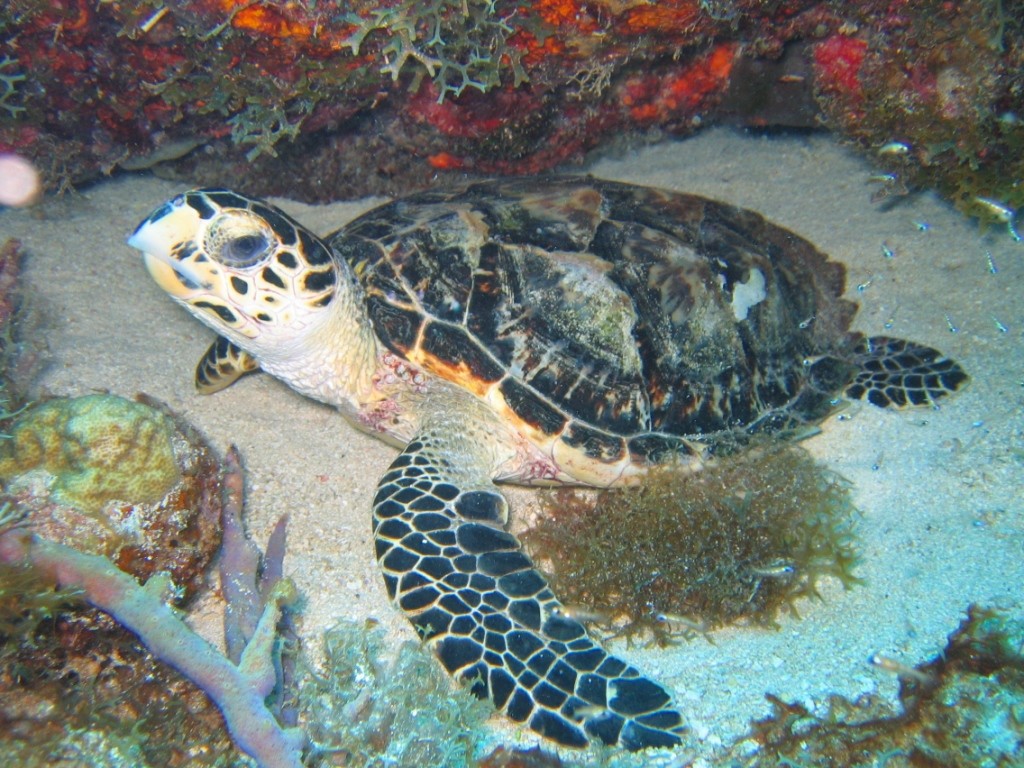
Hawksbill turtle. Photo © Nature Foundation St. Maarten
In the near future, the Foundation hopes to expand the park to 35,000 hectares, which will make it continuous with a park on the French side of the island. Because the current boundaries of the park include the parts of the reef that were best for fishing and diving, those areas with the calmest waters and the healthiest reefs, the expansion is an easier case to make, since it will include choppier waters that are used less for fishing and diving.
How successful has it been?
The Foundation has documented an increase in the populations in certain species of fish through yearly surveys. In 2013, they found that grouper and snapper populations have rebounded, showing a 10-15% increase and fishers are reporting increased catch. The Foundation has begun staghorn (Acropora cervicornis) and elkhorn coral (Acropora palmata) nurseries and they hope to transplant these stocks to areas with high water quality to quicken the reef’s recovery.
Lessons learned and recommendations
- Stakeholder involvement is key. Involving stakeholders and the local community is key to achieving conservation goals. The Foundation went to community groups and community council meetings and gave short and simple presentations. Instead of following these presentations with a traditional question-and-answer session, the Foundation personnel solicited feedback from everyone. By making these sessions informal, they were able to talk and listen to people, and therefore more effectively communicate with community members in a manner that was more comfortable for them.
- Economic valuation of ecosystems is a powerful, persuasive tool. While it can be controversial, it helped make the case for conservation by showing the economic benefits of ecosystem services which was an effective way to reach key decision makers.
- Effective communication should be a priority. Communicating the importance of conservation can be challenging, but to get political and popular support for conservation, scientists must do so through all the means available (Facebook, Twitter, Instagram, and traditional media).
Funding summary
Prince Bernhard Nature Fund
U.S. National Fish and Wildlife Foundation
Caribbean Environment Program, United Nations Environment Program
World Wildlife Fund Netherlands
Implementing Organization of the Foundation for the Development of the Netherlands Antilles (USONA)
MINA Fund Netherlands Antilles
KNAP Fund Netherlands Antilles
The INNO Fund
Bunchies Garage & Trucking NV
Princess Juliana International Airport (PJIA)
St. Maarten Harbour Holding Company (SHHC)
St. Maarten Tourist Office
Dutch National Postcode Lottery
SOL Antilles
Lead organizations
Partners
Dutch Caribbean Nature Alliance
Resources
The Government of Sint Maarten
Coastal Capital: Ecosystem Valuation for Decision Making in the Caribbean, World Resources Institute
Written by: Tadzio Bervoets, Nature Foundation St. Maarten, Sint Maarten
This case study was adapted from: Cullman, G. (ed.) 2014. Resilience Sourcebook: Case studies of social-ecological resilience in island systems. Center for Biodiversity and Conservation, American Museum of Natural History, New York, NY.

